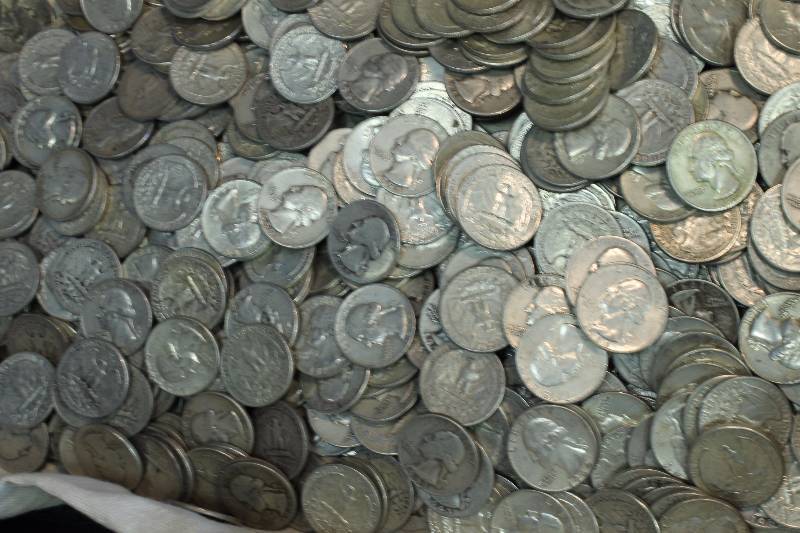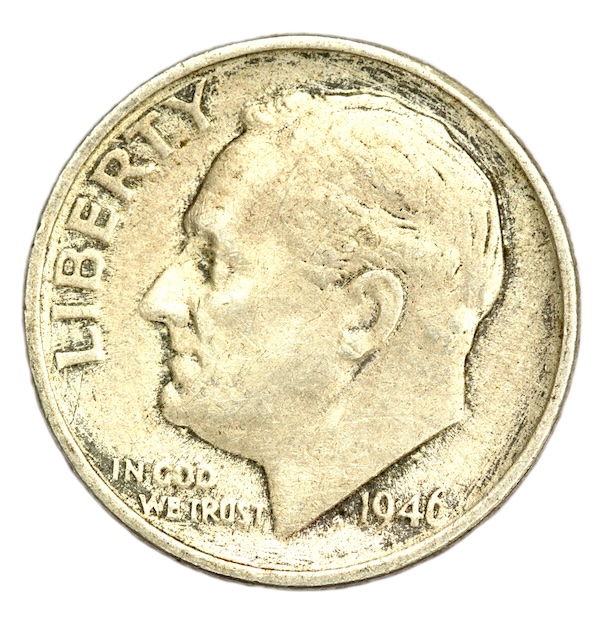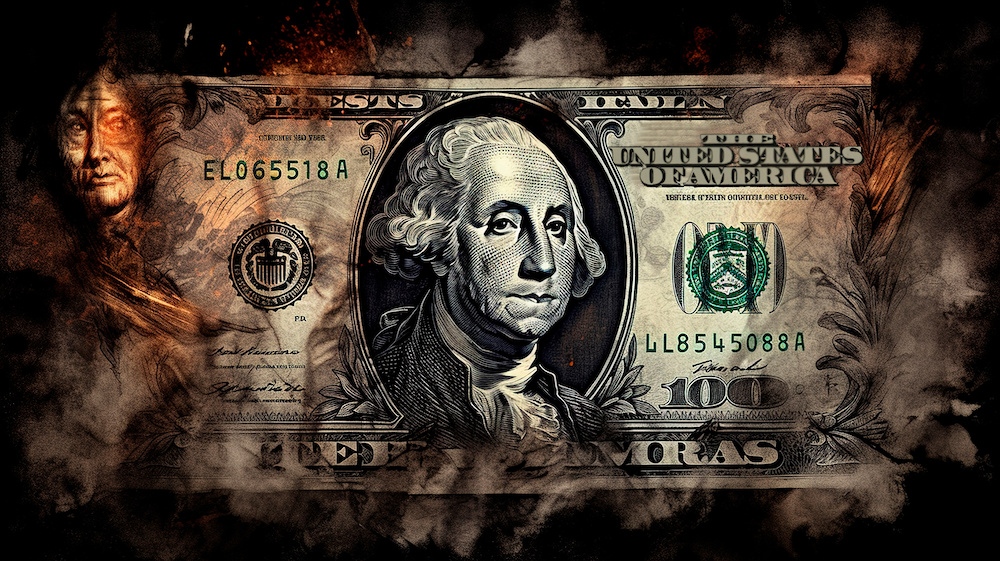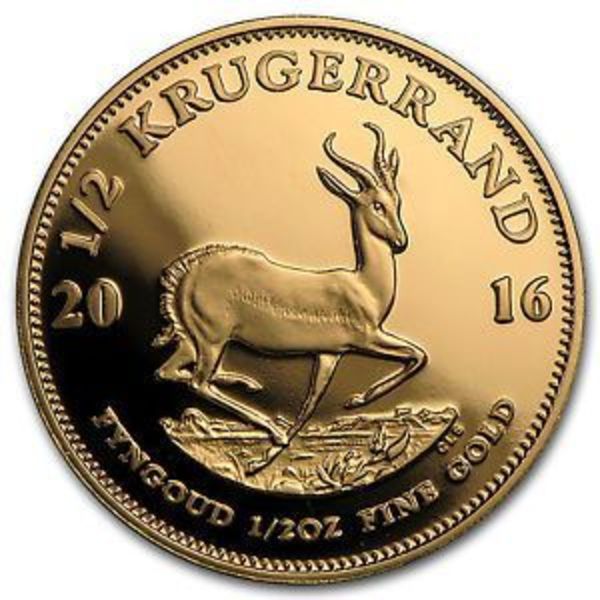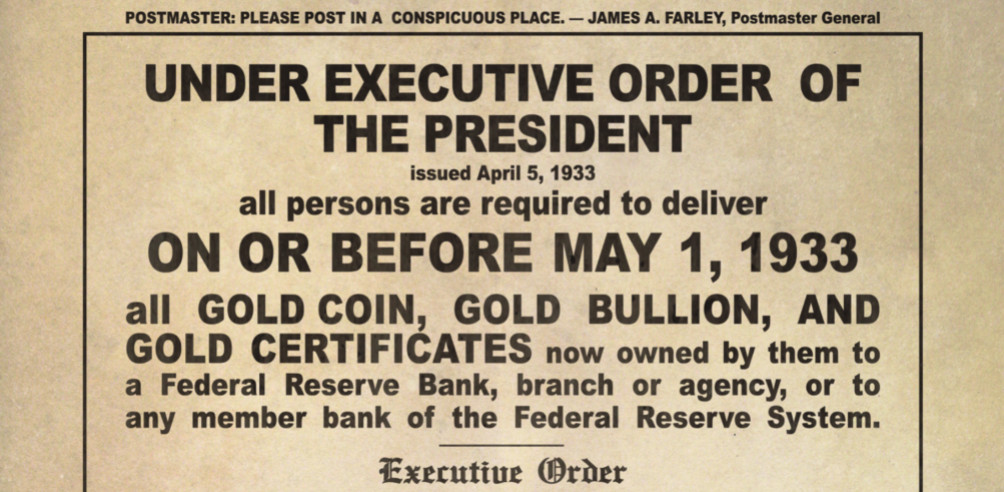After the creation of the Federal Reserve in 1913, the US economy continued a slow debasement that coincided with the introduction of fiat paper currency. After the gold confiscation in 1933 by Roosevelt, the amount of currency in circulation began to increase exponentially.
According to data from the St Louis Fed, the amount of USD circulating during the 1920s remained steady at around $4.5 billion. During the 1930s, the number of dollars in circulation began to steadily increase, before skyrocketing during World War II to over $27 billion.
Prior to 1965, most of the coins that circulated throughout the United States were minted from an alloy of .900 pure fine silver. Historically, this alloy is known as “coin silver” and it was regularly found in colonial America for use in utensils, serving ware and other household items. In 1837, the US Mint began to issue various denominations in a 90% silver alloy.
Today, it’s difficult to believe and even harder to quantify that billions of silver coins were minted on behalf of the Treasury and circulating throughout the economy prior to the debasement of the dollar during the 20th century.
Junk silver is the simple term given to circulated silver coins from this era that have little to no numismatic value to collectors. These coins maintain their intrinsic value due to their silver content.
Circulated 90% silver coins can be purchased at most local coin shops, pawn brokers and some antique stores. Investors looking for the lowest premiums on junk silver are stacking large quantities of circulated coins. It’s not junk at all and is very easy to identify and authenticate with some basic information.
Despite these coins being readily available from local suppliers, still the most popular option is to make regular purchases from the lowest priced online bullion dealers and having bags of coins shipped directly to your door or stash location.
Coinage Act of 1965
Debasement continued on June 3, 1965, when Lyndon Johnson sent a special message to Congress requesting immediate legislation to remove silver from dime, quarter coins and to reduce the silver content in half-dollar coins.
The Coinage Act of 1965 was introduced by Senator Absalom Robertson, a Democrat from Virginia who staunchly opposed Civil Rights. He was also the father of televangelist Pat Robertson.
The composition of the half-dollar coin was reduced to 40% and a new coin was designed around a structure core, encapsulated by a silver alloy cladding.
The core alloy at the center of the coin would be minted of an alloy containing 21% silver mixed with base metal. The surrounding face cladding of the coin would be minted with an alloy containing 80% silver for a smooth and durable finish that could better withstand wear and tear that occurs with circulation.
This legislation helped to keep the silver prices artificially low by eliminating the use of silver in circulating coinage and dumping additional silver onto the market. The era of this price manipulation continued until silver hit a low of $12.08 in May 1967. Within one year, the price of silver has rise to $21.67 an ounce.
The Coinage Act of 1965 transferred millions of tons of silver from the US economy into industry.
At the time, silver was being consumed in mass amount by technological advances in photographic film on both the consumer level and in medical and industrial imaging. As the industrial consumption of silver continued to grow, so did silver prices.
During this period, Kodak had become an important innovator of photographic films and other imaging technologies. These advancements led to the mass consumer adoption of cameras and photography, in addition to be used by the military and intelligence agencies.
Photographic and X-Ray films included silver halide grains and crystals sandwiched in an acetate film. The more time that silver halide crystals are exposed to light, a chemical reaction occurs that creates the dark shades and contrasting shadows that are made from the familiar black and white film.
Under the leadership of William Vaughn, Kodak invented and manufactured high-resolution, grain-dense photographic films for CIA that were used in imaging systems like those in the SR-71 Blackbird, U2 spy planes, and other aerial intelligence aircraft that were used during the Cold War. The use of film in reconnaissance activity until the advancement of digital satellite imaging.
Silver is also consumed by medical devices and button-sized and smaller batteries were invented for use in things like hearing aids and other common assistive medical devices.
